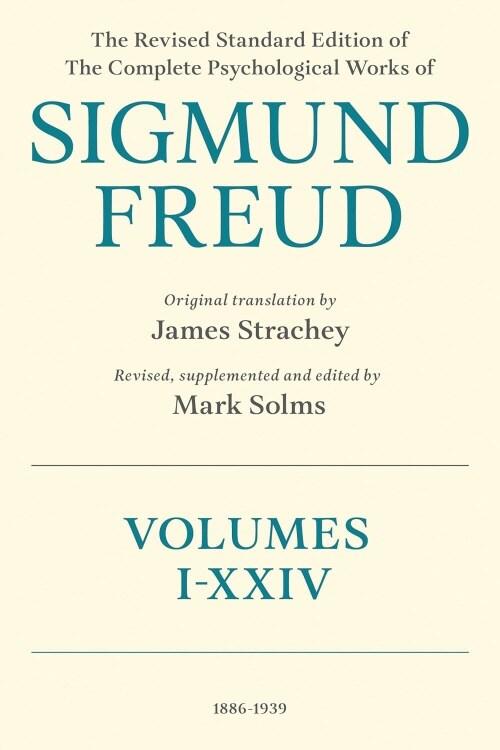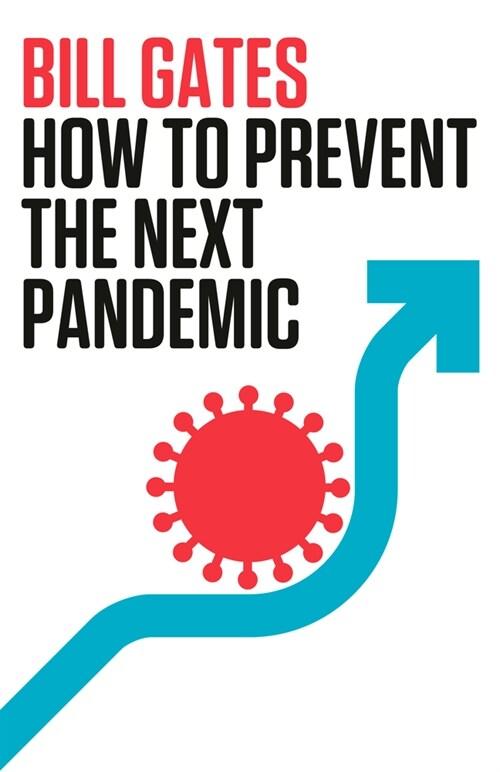책 이미지
![[eBook Code] Antisepsis, Disinfection, and Sterilization](/img_thumb/9781683673071.jpg)
책 정보
· 분류 : 외국도서 > 의학 > 미생물학
· ISBN : 9781683673071
목차
Chapter 1 Introduction
1.1 General introduction 1
1.2 Definitions 2
1.3 General microbiology 6
1.3.1 Introduction 6
1.3.2 Eukaryotes & prokaryotes 6
1.3.3 Eukaryotes 6
1.3.3.1 Multicellular eukaryotes 6
1.3.3.2 Fungi 8
1.3.3.3 Algae 13
1.3.3.4 Protozoa 13
1.3.4 Prokaryotes 14
1.3.4.1 Eubacteria 14
1.3.4.2 Archaea 26
1.3.5 Viruses 28
1.3.6 Prions 33
1.3.7 Toxins 34
1.4 General considerations 36
1.4.1 Microbial resistance 36
1.4.2 Evaluation of efficacy 38
1.4.2.1 Suspension testing 38
1.4.2.2 Surface testing 43
1.4.2.3 In-use testing 45
1.4.2.4 Biological, checmical, and other indicators 46
1.4.2.5 Parametric control 49
1.4.2.6 Microscopy and other techniques 49
1.4.3 Disinfection versus Sterilization 50
1.4.4 Choosing a process or product 52
1.4.5 Guidelines and standards 53
1.4.6 Formulation effects 53
1.4.7 Process effects 55
1.4.8 The importance of surface cleaning 57
1.4.9 Water quality 59
Chapter 2 Physical Disinfection
2.1 Introduction 61
2.2 Heat 61
2.2.1 Types 61
2.2.2 Applications 63
2.2.3 Spectrum of Activity 66
2.2.4 Advantages 67
2.2.5 Disadvantages 67
2.2.6 Mode of Action 68
2.3 Cold temperatures 68
2.4 Radiaton 68
2.4.1 Isotopes 68
2.4.2 Electromagnetic Radiation 69
2.4.3 Types 71
2.4.3.1 Ultraviolet 71
2.4.3.2 Infrared 72
2.4.3.3 Microwaves 72
2.4.4 Applications 73
2.4.4.1 UV 73
2.4.4.2 Infrared 74
2.4.4.3 Microwaves 74
2.4.5 Spectrum of Activity 74
2.4.5.1 UV 74
2.4.5.2 Infrared 75
2.4.5.3 Microwaves 75
2.4.6 Advantages 75
2.4.6.1 UV 76
2.4.6.2 Infrared 76
2.4.6.3 Microwaves 76
2.4.7 Disadvantages 76
2.4.7.1 UV 76
2.4.7.2 Infrared 76
2.4.7.3 Microwaves 76
2.4.8 Mode of Action 76
2.4.8.1 UV 76
2.4.8.2 Infrared 77
2.4.8.3 Microwaves 77
2.5 Filtration 77
2.5.1 Types and applications 77
2.5.2 Spectrum of activity 82
2.5.3 Advantages 84
2.5.4 Disadvantages 84
2.5.5 Mode of action 74
Chapter 3 Chemical Disinfection
3.1 Introduction 85
3.2 Acids and acid derivatives 85
3.2.1 Types 85
3.2.2 Applications 87
3.2.3 Spectrum of activity 88
3.2.4 Advantages 88
3.2.5 Disadvantages 88
3.2.6 Mode of action 89
3.3 Alkalis or bases 89
3.3.1 Types 89
3.3.2 Applications 90
3.3.3 Spectrum of activity 90
3.3.4 Advantages 90
3.3.5 Disadvantages 91
3.3.6 Mode of action 91
3.4 Aldehydes 91
3.4.1 Types 91
3.4.2 Applications 90
3.4.2.1 Glutaraldehyde and Opa 91
3.4.2.2 Formaldehyde 92
3.4.3 Spectrum of Activity 93
3.4.3.2 Formaldehyde 94
3.4.4 Advantages 94
3.4.2.1 Glutaraldehyde and Opa 94
3.4.2.2 Formaldehyde 94
3.4.5 Disadvantages 95
3.4.2.1 Glutaraldehyde and Opa 95
3.4.2.2 Formaldehyde 95
3.4.6 Mode of Action 95
3.4.2.1 Glutaraldehyde and Opa 95
3.4.2.2 Formaldehyde 97
3.5 Alcohols 97
3.5.1 Types 97
3.5.2 Applications 97
3.5.3 Spectrum of Activity 98
3.5.4 Advantages 98
3.5.5 Disadvantages 99
3.5.6 Mode of Action 99
3.6 Anilides 99
3.6.1 Types 99
3.6.2 Applications 100
3.6.3 Spectrum of Activity 100
3.6.4 Advantages 100
3.6.5 Disadvantages 100
3.6.6 Mode of Action 100
3.7 Antimicrobial dyes 101
3.7.1 Types 101
3.7.2 Applications 101
3.7.3 Spectrum of activity 102
3.7.4 Advantages 103
3.7.5 Disadvantages 103
3.7.6 Mode of action 103
3.8 Biguanides 104
3.8.1 Types 104
3.8.2 Applications 104
3.8.3 Spectrum of activity 105
3.8.4 Advantages 106
3.8.5 Disadvantages 106
3.8.6 Mode of action 106
3.9 Diamidines 107
3.9.1 Types 107
3.9.2 Applications 107
3.9.3 Spectrum of activity 107
3.9.4 Advantages 108
3.9.5 Disadvantages 108
3.9.6 Mode of action 108
3.10 Essential oils and plant extracts 108
3.10.1 Types 108
3.10.2 Applications 109
3.10.3 Spectrum of activity 109
3.10.4 Advantages 110
3.10.5 Disadvantages 110
3.10.6 Mode of action 110
3.11 Halogens and halogen-releasing agents 111
3.11.1 Types 111
3.11.2 Applications 115
3.11.2.1 Iodine 115
3.11.2.2 Chlorine 116
3.11.2.3 Bromine 117
3.11.3 Spectrum of activity 117
3.11.3.1 Iodine 117
3.11.3.2 Chlorine 117
3.11.3.3 Bromine 118
3.11.4 Advantages 118
3.11.4.1 Iodine 118
3.11.4.2 Chlorine 118
3.11.4.3 Bromine 118
3.11.5 Disadvantages 119
3.11.5.1 Iodine 119
3.11.5.2 Chlorine 119
3.11.5.3 Bromine 119
3.11.6 Mode of action 120
3.11.6.1 Iodine 120
3.11.6.2 Chlorine 120
3.11.6.3 Bromine 121
3.12 Metals 121
3.12.1 Types 121
3.12.2 Applications 122
3.12.2.1 Copper 122
3.12.2.2 Silver 123
3.12.3 Spectrum of activity 123
3.12.3.1 Copper 123
3.12.3.2 Silver 124
3.12.4 Advantages 124
3.12.4.1 Copper 124
3.12.4.2 Silver 124
3.12.5 Disadvantages 124
3.12.5.1 Copper 124
3.12.5.2 Silver 124
3.12.6 Mode of action 125
3.12.6.1 Copper 125
3.12.6.2 Silver 125
3.13 Peroxygens and other forms of oxygen 126
3.13.1 Types 126
3.13.2 Applications 129
3.13.2.1 Ozone 129
3.13.2.2 Hydrogen peroxide 130
3.13.2.3 PAA 134
3.13.2.4 Chlorine dioxide 135
3.13.3 Spectrum of activity 136
3.13.3.1 Ozone 136
3.13.3.2 Hydrogen peroxide 137
3.13.3.3 PAA 138
3.13.3.4 Chlorine dioxide 139
3.13.4 Advantages 139
3.13.4.1 Ozone 139
3.13.4.2 Hydrogen peroxide 139
3.13.4.3 PAA 140
3.13.4.4 Chlorine dioxide 140
3.13.5 Disadvantages 140
3.13.5.1 Ozone 140
3.13.5.2 Hydrogen peroxide 140
3.13.5.3 PAA 141
3.13.5.4 Chlorine dioxide 141
3.13.6 Mode of action 142
3.13.6.1 Ozone 142
3.13.6.2 Hydrogen peroxide 142
3.13.6.3 PAA 143
3.13.6.4 Chlorine dioxide 143
3.14 Phenolics 143
3.14.1 Types 144
3.14.2 Applications 144
3.14.3 Spectrum of activity 145
3.14.4 Advantages 145
3.14.5 Disadvantages 146
3.14.6 Mode of action 146
3.15 Antiseptic phenolics 147
3.15.1 Types 147
3.15.2 Applications 148
3.15.3 Antimicrobial activity 149
3.15.4 Advantages 150
3.15.5 Disadvantages 151
3.15.6 Mode of action 152
3.15.6.1 Triclosan 152
3.15.6.2 Chloroxylenol 154
3.15.6.3 Salicyclic acid 154
3.16 Quaternary ammonium compounds and surfactants 155
3.16.1 Types 155
3.16.2 Applications 156
3.16.3 Antimicrobial efficacy 157
3.16.4 Advantages 158
3.16.5 Disadvantages 158
3.16.6 Mode of action 158
3.17 Other miscellaneous biocides or applications 159
3.17.1 Pyrithiones 159
3.17.2 Isothiazolones derivatives 159
3.17.3 Biocides integrated into surfaces 160
3.17.4 Micro- or nano-particles 162
3.17.6 Antimicrobial enzymes, proteins or peptides 163
3.17.7 Bacteriophages 165
Chapter 4 Antiseptics and Antisepsis
4.1 Introduction 167
4.2 Some definitions specific to antisepsis 167
4.3 Structure of skin 168
4.4 Skin microbiology 169
4.5 Antiseptic applications 169
4.5.1 Routine skin washing/antisepsis 170
4.5.2 Pretreatment of skin prior to surgical intervention 173
4.5.3 Treatment of skin or wound infections 174
4.5.4 Treatment of oral and other mucous membranes 177
4.5.5 Material-integrated applications 177
4.6 Biocides used as antiseptics 177
4.6.1 General considerations 177
4.6.2 Major types of biocides in antiseptics 180
4.6.3 Other antiseptic biocides 183
Chapter 5 Physical sterilization
5.1 Introduction 185
5.2 Moist heat sterilization 185
5.2.1 Types 187
5.2.1.1 Upward-displacement autoclaves 187
5.2.1.2 Downward-displacement autoclaves 188
5.2.1.3 Vacuum and pressure-pulsing autoclaves 188
5.2.1.4 Other types of autoclaves and stream sterilization cycles 189
5.2.2 Applications 192
5.2.3 Spectrum of activity 193
5.2.4 Advantages 196
5.2.5 Disadvantages 196
5.2.6 Mode of action 197
5.3 Dry heat Sterilization 197
5.3.1 Types 197
5.3.2 Applications 198
5.3.3 Spectrum of activity 199
5.3.4 Advantages 199
5.3.5 Disadvantages 199
5.3.6 Mode of action 200
5.4 Radiation Sterilization 200
5.4.1 Types 200
5.4.2 Applications 203
5.4.3 Spectrum of activity 206
5.4.4 Advantages 208
5.4.5 Disadvantages 208
5.4.6 Mode of action 208
5.5 Filtration 209
5.6 Other physical sterilization methods 209
5.6.1 Plasma 209
5.6.2 Pulsed light 211
5.6.3 Supercritical fluids 213
5.6.4 Pulsed electric fields 214
Chapter 6 Chemical Sterilization
6.1 Introduction 215
6.2 Epoxides 215
6.2.1 Types 216
6.2.2 Applications 216
6.2.3 Spectrum of activity 219
6.2.4 Advantages 220
6.2.5 Disadvantages 221
6.2.6 Mode of action 221
6.3 Low temperature steam-formaldehyde 222
6.3.1 Types and applications 222
6.3.2 Spectrum of activity 224
6.3.3 Advantages 224
6.3.4 Disadvantages 224
6.3.5 Mode of action 225
6.4 High temperature formaldehyde-alcohol
6.4.1 Types and applications 225
6.4.2 Spectrum of activity 225
6.4.3 Advantages 226
6.4.4 Disadvantages 226
6.4.5 Mode of action 226
6.5 Hydrogen peroxide 226
6.5.1 Types 226
6.5.2 Applications 227
6.5.3 Spectrum of activity 232
6.5.4 Advantages 232
6.5.5 Disadvantages 233
6.5.6 Mode of action 233
6.6 Other oxidizing agent based-processes 233
6.6.1 Liquid peracetic acid 233
6.6.2 Electrolyzed water 234
6.6.2.1 Types 234
6.6.2.2 Applications 236
6.6.2.3 Spectrum of activity 237
6.6.2.4 Advantages 237
6.6.2.5 Disadvantages 237
6.6.2.6 Mode of action 238
6.6.3 Gaseous peracetic acid 238
6.6.4 Ozone 240
6.6.5 Chlorine dioxide 242
6.6.6 Nitrogen dioxide 242
Chapter 7 Mechanisms of Action
7.1 Introduction 247
7.2 Anti-infectives 248
7.2.1 Antibacterials (antibiotics) 248
7.2.2 Antifungals 251
7.2.3 Antivirals 251
7.2.4 Antiparasitic drugs 251
7.3 Macromolecular structure 251
7.4 General mechanisms of action 255
7.4.1 Introduction 255
7.4.2 Oxidizing agents 257
7.4.3 Cross-linking or coagulating agents 263
7.4.4 Transfer of energy 270
7.4.5 Other structure-disrupting agents 276
Chapter 8 Mechanisms of Microbial Resistance
8.1 Introduction 285
8.2 Biocide/microorganism interaction 285
8.3 Intrinsic Bacterial Resistance Mechanisms 287
8.3.1 General Stationary Phase Phenomenon 288
8.3.2 Motility and chemotaxis 289
8.3.3 Stress responses 289
8.3.4 Efflux mechanisms 295
8.3.5 Enzymatic and chemical protection 298
8.3.6 Intrinsic mechanisms to heavy metals 299
8.3.7 Capsules, slime formation and S-layers 302
8.3.8 Biofilm development 303
8.3.9 Bacteria with extreme intrinsic resistance 309
8.3.10 Extremophiles 312
8.3.11 Dormancy 316
8.3.12 Revival mechanisms 327
8.4 Intrinsic resistance of mycobacteria 329
8.5 Intrinsic resistance of other Gram-positive bacteria 333
8.6 Intrinsic resistance of Gram-negative bacteria 337
8.7 Acquired Bacterial Resistance Mechanisms 341
8.7.1 Introduction 341
8.7.2 Mutational resistance 344
8.7.3 Plasmids and transmissible elements 355
8.8 Mechanisms of viral resistance 366
8.9 Mechanisms of prion resistance 372
8.10 Mechanisms of fungal resistance 376
8.11 Mechanisms of resistance in other eukaryotic microorganisms 384
Index













![[eBook Code] Antisepsis, Disinfection, and Sterilization](./img_thumb/9781683673071.jpg)








